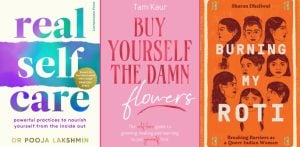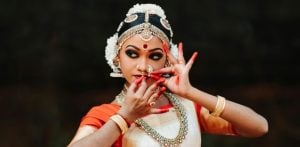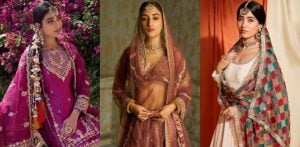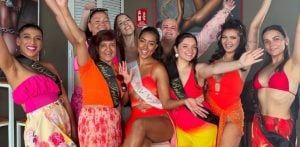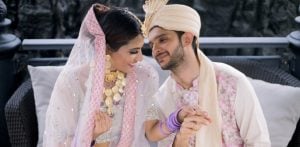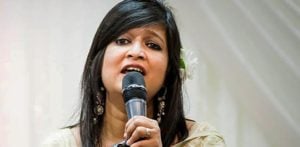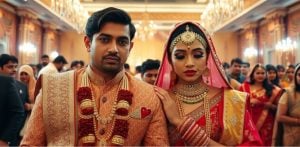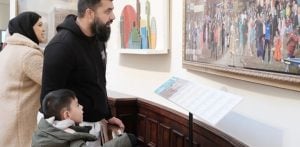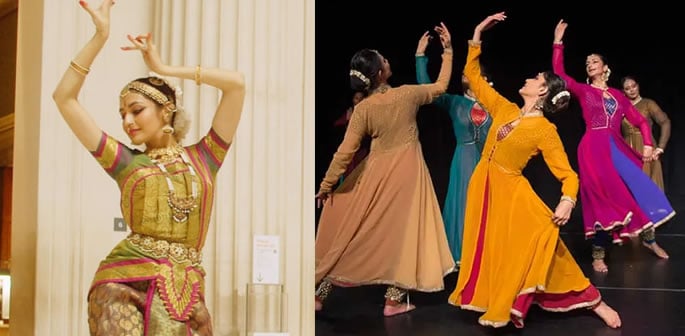Over four decades, it has pushed creative boundaries.
The UK’s South Asian dance scene is thriving. It’s bold, expressive, and increasingly impossible to ignore.
Beyond Bollywood’s glittering veneer lies a deeper, more complex movement.
In the UK, South Asian dance groups are fusing tradition with personal storytelling. Most importantly, they redefine what South Asian identity looks like on stage.
These groups are cultural narrators, community leaders, and fearless innovators. Their choreography speaks to young British Asians finding pride in their roots.
Here are seven groups transforming the UK’s dance landscape, one step at a time.
Akademi

London-based Akademi has been championing South Asian dance since 1979. Founded by Tara Rajkumar, the organisation aimed to bring classical Indian dance into public view.
It moved the art form from community centres to iconic public venues. Akademi has performed in parks, museums, and even inside abbeys.
Over four decades, it has pushed creative boundaries. The company combines traditional techniques with contemporary themes, often through global collaborations.
One of its standout productions, Pravaas, explores climate migration using movement as the primary language. This is dance as activism; powerful, purposeful, and urgent.
Akademi also supports emerging talent. It offers mentoring, workshops, and performance opportunities. Its commitment to education ensures the dance ecosystem continues to grow.
Their archive was recently preserved with National Lottery Heritage Fund support. This recognises their cultural value and their impact on British performing arts.
Sonia Sabri Company

Based in Birmingham, the Sonia Sabri Company (SSCo) brings Kathak into the now. Known for its intricate footwork and storytelling, Kathak is a North Indian classical dance.
Under Sonia Sabri’s leadership, the company gives it a fresh voice.
Sabri fuses Kathak with genres like jazz, hip-hop, and folk. The result is a dynamic, cross-cultural sound and movement.
Her international acclaim stems from both her musicality and her magnetic stage presence. She choreographed for major events, including the 2012 Cultural Olympiad.
SSCo’s shows are high-energy and emotionally layered. Recent production Mughal Miniatures: Animal Paradise combined puppetry and dance to explore our connection with nature.
The company regularly performs in theatres, schools, and museums. It ensures classical dance remains accessible and relevant to modern audiences.
Kala The Arts

Kala The Arts is based in Hampshire and focuses on Odissi, a classical dance that originated in East Indian temples.
Founded in 1994 by Sushmita Pati, the company has made this intricate style available to UK audiences.
Pati is an international Odissi dancer and choreographer. Her leadership has built a thriving platform for high-quality performances and workshops.
The company’s shows are visually rich, complete with flowing silks, ornate costumes, and expressive storytelling. Recent works like Shivoham and Sapta are inspired by Hindu mythology and deities.
Kala The Arts is also deeply invested in outreach.
It offers regular classes, community events, and school workshops. Their mission is clear: bring Odissi to everyone, not just the elite.
Pagrav Dance Company

Pagrav Dance Company, based in Milton Keynes, is rooted in Kathak. But its approach feels strikingly new.
Founded by Urja Desai Thakore in 2005, the company focuses on emotionally resonant storytelling.
Thakore’s choreography is both grounded in tradition and open to experimentation. She is admired by modernists and classical purists alike.
Pagrav’s recent productions, such as Kattam Katti, explore the complexities of human relationships.
Their outdoor show Deva flipped expectations about what South Asian bodies can express on stage.
The company also invests in future talent. Their youth ensemble, Aunusthan, provides structured training and professional experience.
Their latest solo piece, ROOH: Within Her, celebrates the quiet strength of women across generations. The work connects deeply with British Asian audiences, especially women.
Beeja

Beeja means “seed” in Hindi, a fitting name for a company focused on creative growth.
Founded by Anusha Subramanyam, the London-based South Asian group explores Bharatanatyam in new and surprising ways.
Subramanyam is a trained Bharatanatyam dancer and a movement therapist. Her work blends tradition with wellness, accessibility, and innovation.
Beeja creates interactive performances for unusual locations. They’ve danced in museums, hospitals, and even train stations. This makes classical Indian dance accessible to wider audiences.
Their work is highly collaborative. Beeja often teams up with musicians, multimedia artists, and theatre practitioners to build immersive experiences.
Grounded yet exploratory, Beeja proves that ancient forms can still feel alive, raw, and immediate. The company also uses dance to support physical and emotional well-being.
Apsara Arts

Apsara Arts may have started in Singapore, but its UK presence, particularly in Bradford and Croydon, is growing fast.
The group specialises in Bharatanatyam, branding their style as “Bharatanatyam Redefined”.
Their productions tackle modern issues while staying rooted in spiritual tradition. Technology and cross-cultural storytelling play a major role in their approach.
They don’t shy away from experimenting with form and medium. This allows them to connect with younger audiences without compromising authenticity.
In Croydon, they’ve built a strong community presence. Alongside Bharatanatyam, they also teach Kathak, Bhangra, and Bollywood-inspired choreography.
Apsara Arts is serious about professional development. They provide training and stage opportunities for dancers aiming to perform at the highest levels.
Punjabi Roots Academy

Punjabi Roots Academy is a West London institution with strong links to Bradford. They specialise in Bhangra, a high-octane dance that originated in Punjab’s harvest festivals.
The academy runs workshops for schools, festivals, and corporate events. Their Dhol drum sessions are especially popular, offering a vibrant, hands-on cultural experience.
But this is more than just entertainment. The academy is committed to preserving Punjabi heritage while adapting it for today’s youth.
They’ve even branched into music production and DJing.
This fusion of tradition with technology is helping them attract new audiences and expand their cultural impact.
By blending East and West, Punjabi Roots Academy keeps Bhangra relevant, celebratory, and inclusive.
These seven groups represent just a fraction of what’s happening across the UK.
Each brings a different style and philosophy to the stage, yet all share a common goal: to keep South Asian dance evolving.
Whether it’s the precise gestures of Bharatanatyam or the explosive energy of Bhangra, these artists are reshaping narratives around identity, culture, and belonging.
Their work challenges stereotypes, engages new audiences, and empowers future generations. They are preserving heritage while writing the next chapter.
The future of British South Asian dance is powerful, multifaceted, and full of life. And most importantly, it’s being led by artists who are proudly, unapologetically, themselves.




